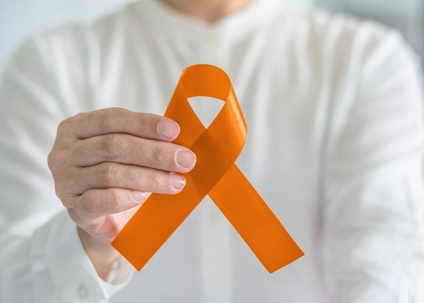For the past 20 years, those affected by Complex Regional Pain Syndrome (CRPS) have used the month of November to come together and raise awareness about their chronic condition.
National CRPS Awareness Month helps inform people of the rare condition and the need for a cure while illuminating the emotional, financial, and physical burden of CRPS.
Colour The World Orange Day™
This year, the world celebrated Colour The World Orange Day™ on November 4th, keeping with the annual tradition of wearing orange on the first Monday of November.
Around the globe, as many as 137 buildings, bridges, and landmarks were lit up orange to participate in #CRPSOrangeDay. Locations included:
- Nagara Falls (New York)
- The Duke Energy Center (Charlotte, NC)
- The Calgary Tower (Calgary, Canada)
- The CN Tower (Toronto, Canada)
- The Blackpool Tower (Blackpool, England)
Colour the World Orange Day™ has helped bring global attention to CRPS since 2014.
What Is CRPS?
One of the most isolating factors of CRPS is the lack of public understanding associated with the condition. CRPS is a form of chronic pain that typically affects the limbs and appendages after an injury, surgery, or other trauma.
Formerly known as Reflex Sympathetic Dystrophy or RSD, Complex Regional Pain Syndrome is characterized by intense pain that is inconsistent with the initial trauma. While the cause of CRPS is not clearly understood, experts like the National Institute of Neurological Disorders and Stroke (NINDS) believe the condition is caused by damage to, or malfunction of, the peripheral and central nervous systems.
Sufferers describe CRPS as a relentless sensation of burning, squeezing, or “pins and needles.”
Other common symptoms of CRPS consist of:
- Sensitivity to touch or cold
- Swelling
- Changes in skin texture (thin or shiny skin)
- Changes in skin temperature
- Abnormal sweating patterns
- Changes in nail and hair growth
- Stiffness in the joints
- Tremors and muscle spasms
- Problems with movement and coordination
Because the condition is seldom understood, it sometimes goes undiagnosed. This is why awareness is so important. According to the Burning Nights charity, widespread knowledge of CRPS will help patients get quicker diagnoses and better treatments. Approximately 1 in 3,800 people are diagnosed with CRPS each year, but many more may be suffering in the dark due to delayed or misdiagnoses.
What Causes CRPS?
More than 90% of cases are triggered by some sort of trauma, although it is unclear why some individuals develop CRPS and others do not. Occasionally, CRPS emerges after a car accident, but some cases can be tied to a simple medical procedure. Each instance of CRPS represents an unusual response and magnifies the effects of the initial injury.
The following injuries are frequently associated with CRPS:
- Fractures
- Sprains and strains
- Soft tissue injuries (burns, cuts, or bruises)
- Surgery
- Limb immobilization (like wearing a cast)
CRPS can also be caused by a distinct nerve injury. When this is the case, the condition is referred to as Type 2 CRPS. Ninety percent of those afflicted suffer from Type 1 CRPS (outlined above).
What To Do If You Are Diagnosed?
If you are diagnosed with CRPS, discuss treatment options with your doctor. Rehabilitation and physical therapy, psychotherapy, surgery, spinal cord stimulation, and medications are all tools for alleviating this type of chronic pain.
If your diagnosis is linked to a specific trauma, like a slip and fall or even a fender-bender, you may be able to finance your treatments via an insurance claim or personal injury lawsuit.
Our attorneys can help you explore your case during a free, no-obligation consultation.
If you’re ready to get started, contact Palmisano & Goodman, P.A. at (732) 709-4400 today.

